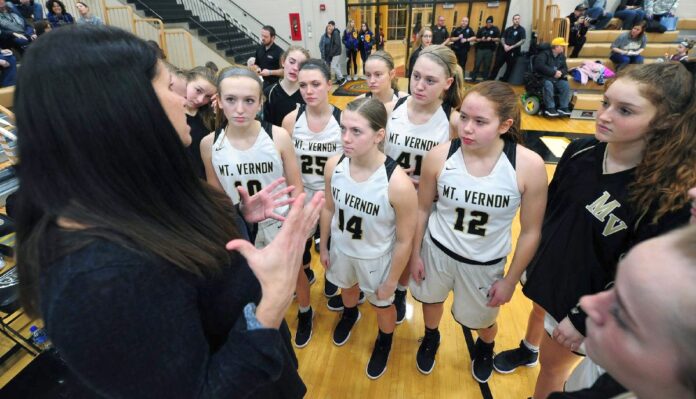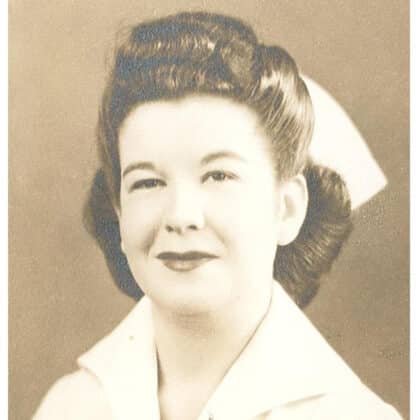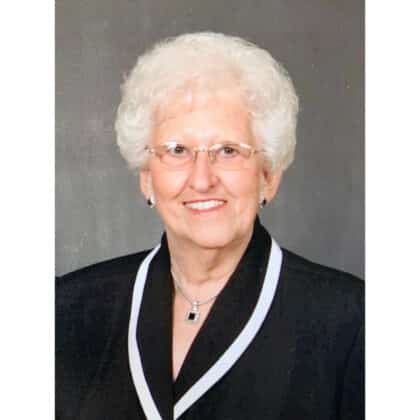
GREENFIELD — The collegiate recruiting landscape continues to change amidst the ongoing era of the coronavirus pandemic.
On Wednesday, the NCAA Division I Council Coordination Committee voted to extend the recruiting dead period until July 31. The committee decided to lengthen the dead period to June 30 previously, a determination that occurred on May 13.
With the decision to halt NCAA winter and spring sports competition this past March came an all-encompassing initial recruiting “dead period,” which restricted in-person contact between college coaches and prospective student-athletes.
[sc:text-divider text-divider-title=”Story continues below gallery” ]
Originally, the recruiting dead period was set to run through April 15, only to be extended on April 1 for an additional six weeks until May 31 — the busiest football evaluation period during the recruiting process.
Football recruiting was already in a “quiet period” prior to the sports shutdown in March, so the decision to continue the restrictions has altered the traditional recruitment process.
With college coaches unable to visit potential recruits face-to-face, due to the statewide school shutdowns and the continued NCAA dead period, uncommitted student-athletes and recruiters are being forced to be more creative than in the past.
The recent announcement further increases that need.
Official visits to colleges aren’t an option nor are unofficial trips. College coaches can only contact prospects through phone calls, texting, FaceTime, Zoom and written letters.
“For our sport, when I was coaching D-II, we usually had kids come on campus when there were students because we wanted to give them a feel of how the campus life was,” New Palestine wrestling coach Alex Johns said.
“The dead period as a perspective student-athlete wanting to go on these visits, you’re not going to get that experience that you technically would if you are going while there are students on campus. Right now, that’s going to be a problem with a lot of schools and a lot states having those restrictions, if kids are even allowed to come to campus.”
Johns was a three-time NCAA Division-II national qualifier (2010, 2013, 2014) and earned All-American wrestling honors in 2013 and 2014 at the University of Indianapolis.
Johns served as a graduate assistant for the UIndy wrestling team after his career ended before becoming the head coach at New Palestine.
“We had the wrestling camps in the summer time (at UIndy), which was great because we really utilized that to get some high school kids in, kind of wrestle around with our guys,” Johns said. “That was a great tool for us, especially recruiting Indianapolis-area kids.”
While the recruiting dead period remains in place through the summer, the NCAA committee did grant collegiate student-athletes permission to participate in voluntary activities beginning this Monday. However, the commencement of those workouts and activities will be decided by each individual NCAA-affiliated conference.
As the collegiate world is slowly preparing to welcome back some teams and student-athletes for voluntary training, the recruiting process faces several obstacles, such as the absence of summer showcases and other off-season events where recruiting and prospect evaluations often take place.
“Those senior spring sport athletes, if they potentially wanted to play collegiate athletics, like baseball or softball, that weren’t able to get a look, that’s detrimental,” Johns said. “In wrestling, too. For D-II, last year, they were out there for nationals the day before they started. They canceled it on Thursday night.”
This week, USA Wrestling announced the cancellation of the Junior Nationals at the Fargodome in North Dakota, the summer’s largest wrestling tournament.
The competition was scheduled for July 17-24. The tournament was once known as the Cadet National tournament, and much like AAU summer basketball was a hot-spot event for wrestling recruiters to build relationships with high school student-athletes.
“The part that is sad in both directions is seeing new talent. It’s a lot easier to see it live, then it is on film, and you can’t watch tons of film. If you were there recruiting live, in an hour you can see 100-200 kids because the (basketball) courts are so close,” Mt. Vernon girls basketball coach Julie Shelton said. “So, it’s going to be very hard for colleges to see lots of kids.”
Shelton spent three years at Butler as an assistant women’s basketball coach from 2014-17. A 2006 Butler Athletic Hall of Fame inductee, Shelton was also inducted into the Indiana Basketball Hall of Fame.
While at Butler, Shelton assisted in recruitment, which typically kept her busy this time of the year.
“July was big. We did a little where we would split it, practicing with our team because summer is big there, too, to work them out, but I was on the road every open period,” Shelton said. “I would go the first period somewhere and then the second period, and usually, the one was seven days and the second 10 days. I was on the road usually 15-18 days in July recruiting.”
June was a month for reviewing potential recruit interests and mapping out in-person visits and evaluations, which coincided with AAU schedules and tournaments and on-campus athletic events.
“Fortunately or unfortunately, July and AAU in general, these big tournaments are where these kids are seen. This is a time in June, July and August where all the colleges have their elite camps,” Shelton said. “A lot of kids would go to those to just see the campus and be part of the camp. It will be interesting all the way around to see how it shakes out.”
Prep student-athletes are able to receive offers from recruiters and college coaches, but the process has become unorthodox compared to the past. Now, recruits who decide to make their choice during the pandemic are doing so based on information provided via telecommunication.
“At Butler, we never offered a kid a scholarship over the phone or in a text because it’s so impersonal. You want them on campus. You want them and their family to be there and offer them in person and help them understand how serious you are,” Shelton said. “Now, it’s very impersonal.”
The times are changing and so are the roles of everyone involved.
Lexi Shelton, Julie’s daughter, and fellow Marauders’ basketball incoming senior Abby Worley were both hopeful to gain exposure this summer during the AAU season. Lexi Shelton was set to join the Indy Magic and compete at a higher level prior to her senior season in 2020-21.
With AAU basketball still on hold for the time being, Julie Shelton and other high school coaches are being more proactive in promoting their players and student-athletes as well as the competitors themselves.
“You have to keep doing what you’re doing. Continue training, reaching out to coaches. One thing we always told kids, if they’re interested in going to our school, fill out online questionnaires,” Johns said. “Even over this break, college coaches are still reaching out some of our kids and are trying to as actively normal as far as recruiting.
“Don’t slack off. Use this time and don’t feel sorry for yourself because there’s still people out there looking for opportunities for kids to be part of their program.”
Julie Shelton is offering the same message to her daughter and players.
“It’s probably a very good thing we do have technology. The ability to use social media, the ability to use Hudl and other types of film exchange; if this would have happened when I was in high school, I don’t know what in the world people would have done because you would have had zero contact,” Shelton said. “At least, for coaches and kids, with social media and film and technology, there are other avenues, but it’s just not nearly as convenient.”
The trickle down effect of lost showcases and exposure opportunities could hinder other underclassmen in the short-term. The key is getting the right information to the right recruiters, who could deal with tough decisions due to the lingering limitations.
“I think, it will be difficult for some kids to get recruited, who haven’t been seen yet. I feel sorry for the 2021s and some of the 2022s. And, it’s going to be very hard for colleges because you have your first tier that you’re trying to recruit, and you’ve seen them enough and you know you want them. But, if they don’t say yes, you don’t have the opportunity to see near as many kids live to get that next group of kids as you would in the past,” Shelton said.






